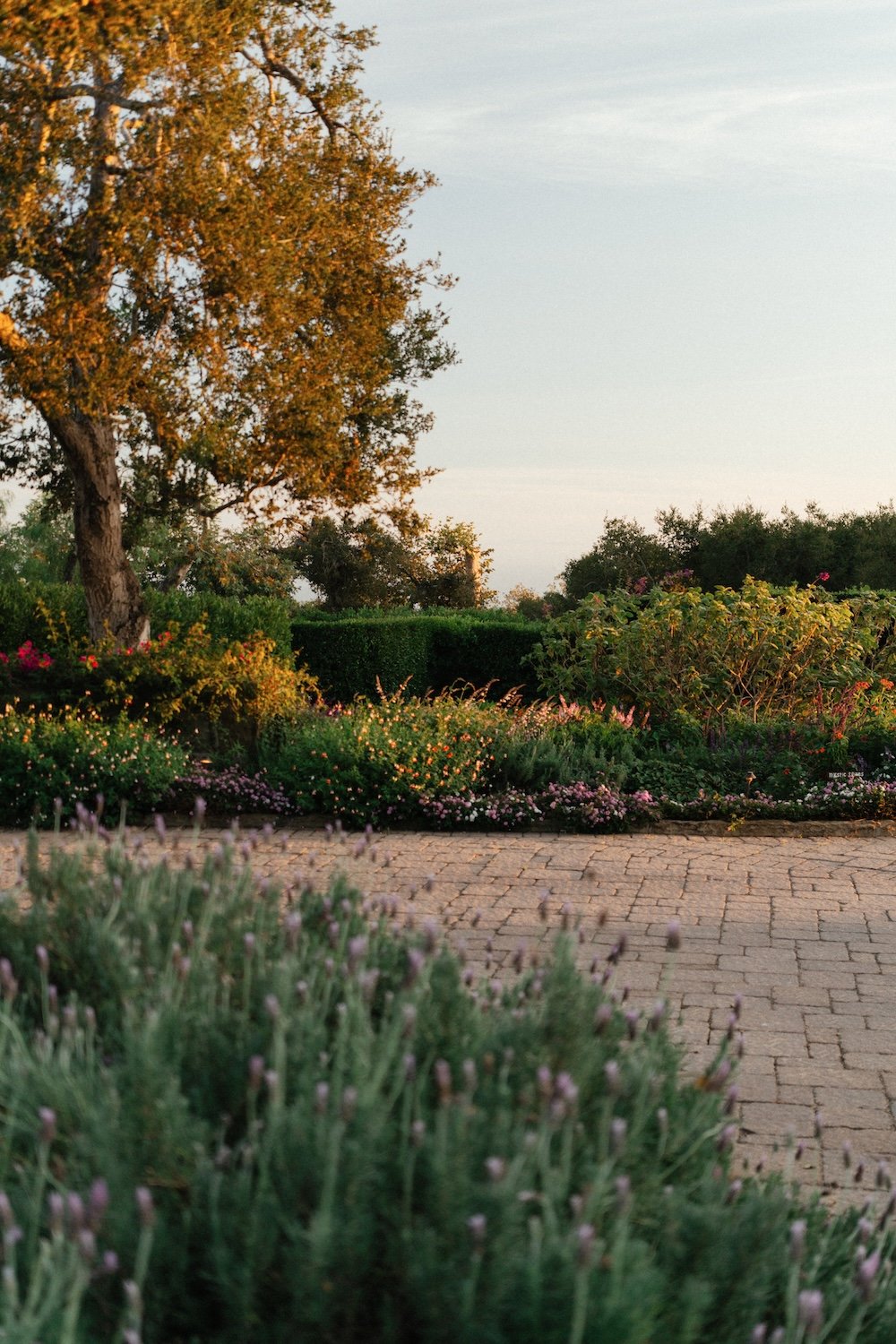The Importance of Native Landscape in California (and How to Tastefully Rewild Your Property)
California Indian Paint Brush (Castilleja affinis)
A Sense of Belonging in the Landscape
There’s something magnetic about a California garden that looks like it belongs here. Not because it’s the most manicured or exotic—but because it feels honest. When you step into a landscape designed with native plants, you’re stepping into the living history of this place: its light, its scent, its rhythm.
Done well, rewilding doesn’t feel wild at all. It feels timeless. It’s the art of creating beauty that honors the land rather than reshaping it.
Why Native Plants Matter in California
California is one of the most ecologically diverse regions on Earth—and one of the most fragile. Native plants evolved for our unique microclimates, soils, and wildlife. That means they:
Require far less water, which is essential in drought-prone regions
Support native birds, bees, and butterflies
Help prevent erosion and improve soil health
Resist many pests and diseases naturally
Native landscapes are self-sustaining ecosystems that restore balance, reduce chemical use, and invite life back to our gardens. They’re resilient by design—and stunning when curated with care.
Leading the Way: Ojai Valley Land Conservancy & Rewild Ojai
Few local movements embody the rewilding spirit like the Ojai Valley Land Conservancy (OVLC) and Rewild Ojai. Their work—restoring wildlands, propagating native seeds, and educating homeowners—has transformed rewilding from a trend into a philosophy.
Their mission is simple but powerful: return the Ojai Valley to a more resilient and biodiverse state, one backyard at a time.
Though based in Ojai, their ethos extends throughout California’s coastal communities, reminding us that rewilding isn’t neglect—it’s curation with new values: beauty, ecology, and belonging.
Local Authorities in Santa Barbara County
For those in Montecito and the greater Santa Barbara area, several organizations are leading the charge in native restoration and education:
Santa Barbara Botanic Garden – A living museum dedicated to California’s native flora, offering tours, sales, and home gardener resources.
Channel Islands Restoration – Experts in habitat restoration who also assist private landowners with native conversions.
Cachuma Resource Conservation District – A go-to source for watershed-friendly landscape design and grant-funded native plant programs.
These organizations prove that taste and ecology can coexist beautifully.
The San Ysidro Ranch Approach
If you’ve ever wandered the grounds of San Ysidro Ranch, you’ve seen what tasteful native landscaping can be. Lavender drifts into sage. Native grasses sway beside decomposed granite paths. Citrus, rosemary, and oak coexist in quiet harmony.
It’s not flashy—it’s elegant. This is rewilding done right: intentional, layered, seasonal, and deeply rooted in place.
San Ysidro Ranch at sunset
How to Tastefully Rewild at Home
1. Start Small
Choose one section of your property to transform. You don’t need to replant everything at once—let the rhythm of the land guide you.
2. Plan for the Seasons
Native plants follow their own bloom cycles. Layer species that flower and fruit at different times for year-round texture and color.
3. Select the Right Plants
For Coastal Southern California (Zones 10b–11a), consider:
Salvia spathacea (Hummingbird Sage)
Artemisia californica (California Sagebrush)
Eriogonum giganteum (St. Catherine’s Lace)
Ceanothus spp. (California Lilac)
Eschscholzia californica (California Poppy)
Muhlenbergia rigens (Deer Grass)
Diplacus aurantiacus (Sticky Monkey Flower)
Quercus agrifolia (Coast Live Oak)
4. Lose the Lawn
Lawns are thirsty and ecologically empty. Replace them with native meadow blends or decomposed granite paths framed by sages, buckwheats, and manzanitas.
5. Use Mulch, Not Plastic
Organic mulch retains moisture and nourishes the soil. Skip weed cloth—it suffocates the ecosystem you’re trying to build.
6. Build Habitat
Add bird baths, insect hotels, and nesting boxes. A rewilded garden is alive with the hum of pollinators and the flutter of wings.
7. Source Locally
The Santa Barbara Botanic Garden and OVLC both host native plant sales featuring region-specific species—plants adapted to our soil and climate.
Designing with Intention
Rewilding doesn’t mean letting your yard go feral—it’s editing your landscape with discernment and story. Balance structure with softness. Pair stone pathways with deer grass. Frame mountain views with oaks and sage. Let beauty and ecology share the stage.
When done thoughtfully, native design feels every bit as sophisticated as traditional landscaping—just more true.
Final Thoughts: A Return to What Belongs
In a world that often prizes the new, rewilding is an act of remembering. It’s a return to what makes California feel like California—dry hills in summer, wildflowers after rain, the scent of sage on the breeze.
Native landscaping offers more than sustainability. It offers rootedness. A quiet rebellion against the disposable, the overwatered, and the overdesigned.
Let your garden tell the story of where you live—and let it do so beautifully.
Follow @montecitovalley for ongoing restoration stories, native plant profiles, and design ideas rooted in the California coast.
Ready to begin rewilding your property with intention?
Explore our companion guides for inspiration:
Santa Barbara Garden Design Principles: Cultivating beauty along the coast.
Best Drought-Tolerant Fruit Trees for Coastal California: Excellent fruit tree options for dry climates.
California Coastal Citrus Almanac: A seasonal guide to growing citrus along the coast.



